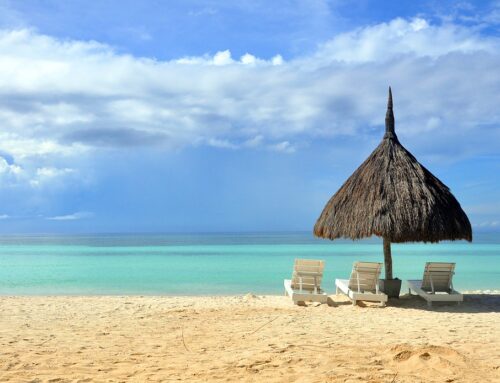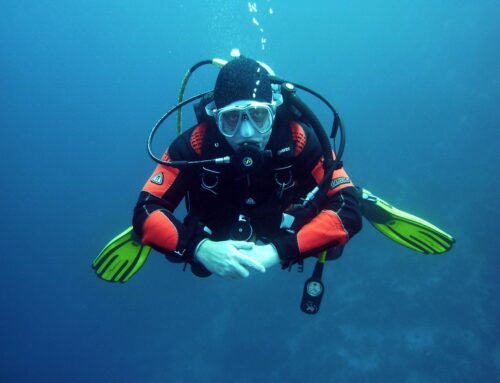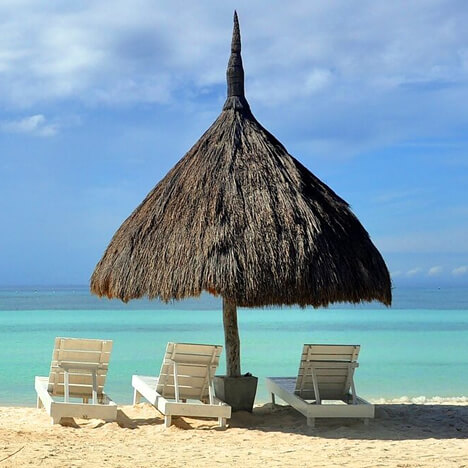
Exploring the Natural Wonders of the Philippines: From Volcanoes to Waterfalls
Exploring the Natural Wonders of the Philippines
The Philippines is a treasure trove of natural wonders. From majestic volcanoes to stunning waterfalls, the country offers endless opportunities for adventure and exploration. This guide will help you discover some of the best natural sites in the Philippines that should be on your travel list.
Volcanoes You Should See Up Close
Mount Mayon (Albay, Bicol Region)
Google Map Location: Mount Mayon, Albay
To get here, take a flight from Manila to Legazpi City. It’s about an hour. From Legazpi, you can ride a jeepney or tricycle to Cagsawa Ruins or Daraga Church, both offering great views. If you’re planning to hike, book a local guided tour for safety.
Mount Mayon is known for its near-perfect cone shape. It stands 2,462 meters tall and is one of the most iconic volcanoes in the country. The volcano is still active and is part of Mayon Volcano National Park. Hiking trails lead through forests and rocky areas, offering great views and encounters with local flora and fauna.
Mount Pinatubo (Tarlac, Pampanga, Zambales)
Google Map Location: Mount Pinatubo
From Manila, take a bus to Capas, Tarlac. This takes about two to three hours. Then ride a tricycle to Barangay Sta. Juliana. You’ll begin with a 4×4 trip, followed by a guided hike to the crater lake.
Mount Pinatubo erupted in 1991, and today it draws visitors to its crater lake with turquoise waters. The trek is a mix of off-road fun and scenic hiking. The journey itself is part of the adventure.
Taal Volcano (Batangas)
Google Map Location: Taal Volcano, Batangas
Drive or ride a bus from Manila to Tagaytay City. From Tagaytay, head down to Talisay in Batangas. There you can take a boat across Taal Lake to the volcano island. Once you arrive, hike or ride a horse to the crater.
Taal Volcano is one of the smallest active volcanoes in the world. It’s also one of the most scenic, with views of both the crater lake and the surrounding area. The hike is relatively easy, making it great for casual explorers.
Mount Apo (Davao del Sur, Cotabato)
Google Map Location: Mount Apo
Fly from Manila to Davao City. From there, go to Kidapawan or Digos, which are common starting points for the hike. Most treks require a guide, so book one in advance.
Mount Apo is the highest peak in the Philippines. It offers a tough but rewarding hike through forests and rocky terrain. The summit has wide-open views that stretch far across Mindanao.
Mount Kanlaon (Negros Oriental, Negros Occidental)
Google Map Location: Mount Kanlaon
Take a flight to Bacolod or Dumaguete. From Bacolod, travel to Canlaon City to start your trek. Hiring a local guide is essential.
Mount Kanlaon is the tallest mountain in the Visayas. It’s an active volcano surrounded by rich biodiversity. The trails pass through forests and lead to sweeping views, making it a favorite among seasoned hikers.
Waterfalls That Will Take Your Breath Away
Kawasan Falls (Cebu)
Google Map Location: Kawasan Falls
From Cebu City, take a bus to Badian. It’s about a three-hour ride. Once in Badian, you can walk or ride a motorcycle to the falls. Guided canyoneering tours are also available.
Kawasan Falls is known for its clear turquoise pools and lush surroundings. It has three main levels, and the first is the easiest to reach. You can swim, raft, or explore the nearby cliffs.
Pagsanjan Falls (Laguna)
Google Map Location: Pagsanjan Falls
Take a bus from Manila to Pagsanjan. The ride takes about two to three hours. Once there, hire a boat for a river ride through narrow canyons to the falls.
This waterfall is located in a tropical forest and is reached by a thrilling boat ride through rapids. It’s a unique experience that combines nature and excitement. When you arrive, take a swim or enjoy the view from the base of the falls.
Maria Cristina Falls (Iligan City)
Google Map Location: Maria Cristina Falls
Fly from Manila to Laguindingan Airport. It’s about 1.5 hours. Then take a bus or van to Iligan City, which takes about 30 minutes. From there, ride a tricycle to the falls.
Maria Cristina Falls is called the “Tears of Grace” and stands 320 feet tall. It’s also a hydroelectric power source and has a viewing deck where visitors can take in its dramatic scenery.
Pulangbato Falls (Bohol)
Google Map Location: Pulangbato Falls
From Tagbilaran City, ride a taxi or tricycle for about 30 minutes. A local guide is helpful for reaching the falls safely.
This waterfall is known for its red rock formations. The water is clear and cool, perfect for a swim or a quiet picnic. The red stones make it a unique and colorful destination.
Let me know when you’re ready for the next section, and I’ll continue with beaches, coral reefs, forests, and caves.
Philippines Natural Wonders: Pristine Beaches and Coral Reefs
The Philippines is renowned for its stunning beaches and vibrant coral reefs, making it a top destination for beach lovers and snorkeling enthusiasts. Here are some of the most breathtaking beaches and coral reefs that showcase the natural beauty of the archipelago:
White Beach (Boracay)
Google Map Location: White Beach, Boracay
How to Get Here:
From Manila, take a flight to Caticlan (about 1 hour) or Kalibo (about 1 hour). From Caticlan, take a short boat ride to Boracay Island. If arriving at Kalibo, you’ll need a bus transfer to Caticlan first.
White Beach is often hailed as one of the most beautiful beaches in the world, known for its powdery white sand and crystal-clear waters. The beach stretches for 4 kilometers and is lined with resorts, restaurants, and beach bars, offering visitors a lively atmosphere. Whether you want to relax on the sand, partake in water sports, or enjoy the vibrant nightlife, White Beach has something for everyone.
El Nido (Palawan)
Google Map Location: El Nido, Palawan
How to Get Here:
Fly from Manila to El Nido Airport (about 1.5 hours) or take a flight to Puerto Princesa and then a van or bus to El Nido (about 6–7 hours).
El Nido is famous for its dramatic limestone cliffs, hidden lagoons, and pristine beaches. The area is a paradise for beachgoers and divers, offering a wide range of activities, including island hopping, snorkeling, and scuba diving. Some of the most beautiful beaches include Las Cabañas, Nacpan, and Seven Commandos Beach, each providing stunning views and a tranquil atmosphere.
Coron (Palawan)
Google Map Location: Coron, Palawan
How to Get Here:
Fly from Manila to Busuanga Airport (about 1.5 hours) and then take a van to Coron town (about 30–40 minutes).
Coron is known for its breathtaking beaches and vibrant coral reefs, making it a favorite destination for snorkeling and diving. The area features several stunning beaches, including Kayangan Lake Beach and Malcapuya Island, where you can swim in crystal-clear waters and explore diverse marine life. The wreck diving in Coron Bay is also famous, with numerous shipwrecks from World War II attracting divers from around the world.
Siargao Island
Google Map Location: Siargao Island
How to Get Here:
Fly from Manila to Siargao Airport (about 2 hours).
Siargao is often referred to as the “Surfing Capital of the Philippines,” but it also boasts stunning beaches and coral reefs. Cloud 9 is the most famous surf spot, but the island also features beautiful beaches like Naked Island, Daku Island, and Guyam Island. Snorkeling and diving enthusiasts will enjoy exploring the vibrant coral reefs teeming with marine life.
Samar Island Natural Park (Samar)
Google Map Location: Samar Island Natural Park
How to Get Here:
Fly from Manila to Calbayog City or Tacloban City (about 1–1.5 hours), then take a van or bus to the park.
Samar Island Natural Park is home to stunning beaches and diverse marine ecosystems. The park offers pristine white sand beaches, such as Calicoan Island and Marabut, which are perfect for swimming and relaxing. The coral reefs surrounding the island provide excellent snorkeling and diving opportunities, showcasing the rich underwater biodiversity of the region.
These pristine beaches and vibrant coral reefs highlight the incredible natural beauty of the Philippines. Whether you’re seeking adventure or relaxation, the country’s coastal wonders provide unforgettable experiences for every traveler.
Why You Should Explore Philippines Natural Wonders
The Philippines is a treasure trove of natural wonders, offering diverse landscapes that range from pristine beaches and vibrant coral reefs to lush forests and majestic mountains. Here are some compelling reasons to explore the natural beauty of the Philippines:
Diverse Ecosystems
The Philippines boasts one of the most diverse ecosystems in the world. With over 7,000 islands, you can find a variety of habitats, including tropical rainforests, coral reefs, and mangroves. Each ecosystem is home to unique flora and fauna, making it a paradise for nature lovers and wildlife enthusiasts.
Stunning Scenery
From the iconic Chocolate Hills of Bohol to the breathtaking views of Mount Mayon, the Philippines offers some of the most stunning landscapes on the planet. Exploring these natural wonders provides an opportunity to witness the beauty of nature firsthand and capture unforgettable photographs.
Adventure Opportunities
The Philippines is a haven for adventure seekers. Whether you’re hiking through lush forests, diving in vibrant coral reefs, or canyoneering in crystal-clear rivers, there are endless opportunities for outdoor activities. Each adventure allows you to experience the natural beauty of the country in a unique way.
Cultural Significance
Many natural wonders in the Philippines hold cultural and historical significance. For example, the Banaue Rice Terraces, often called the “Eighth Wonder of the World,” showcase the ingenuity of the Ifugao people and their sustainable farming practices. Exploring these sites offers insights into the rich cultural heritage of the country.
Relaxation and Rejuvenation
The serene environments of the Philippines’ natural wonders provide the perfect backdrop for relaxation. Pristine beaches and tranquil waterfalls offer an escape from the hustle and bustle of daily life. Spend your days lounging by the shore or enjoying the soothing sounds of nature to rejuvenate your mind and body.
Conservation Efforts
Exploring the natural wonders of the Philippines also supports conservation efforts. Many sites, such as Tubbataha Reefs Natural Park, are protected areas that rely on eco-tourism to fund their preservation. By visiting these sites, you contribute to the protection of the environment and help raise awareness about the importance of conservation.
Warm Hospitality
The Philippines is known for its warm and welcoming people. When you explore the natural wonders of the country, you’ll encounter local communities eager to share their culture and traditions. From enjoying traditional Filipino cuisine to participating in local festivals, you’ll have the chance to connect with the people who call this beautiful country home.
Exploring the natural wonders of the Philippines is an adventure that promises unforgettable experiences, breathtaking scenery, and a deeper appreciation for the beauty of our planet. Whether you’re an adventurer, a nature lover, or simply seeking relaxation, the Philippines offers something for everyone in its stunning landscapes.

















